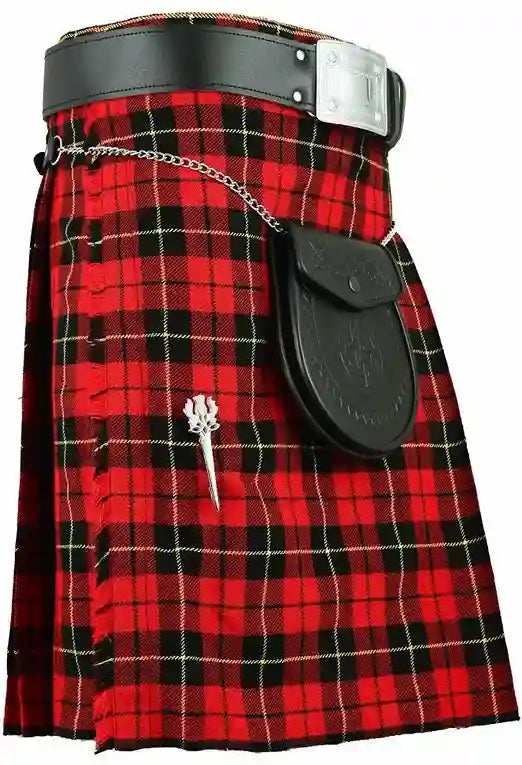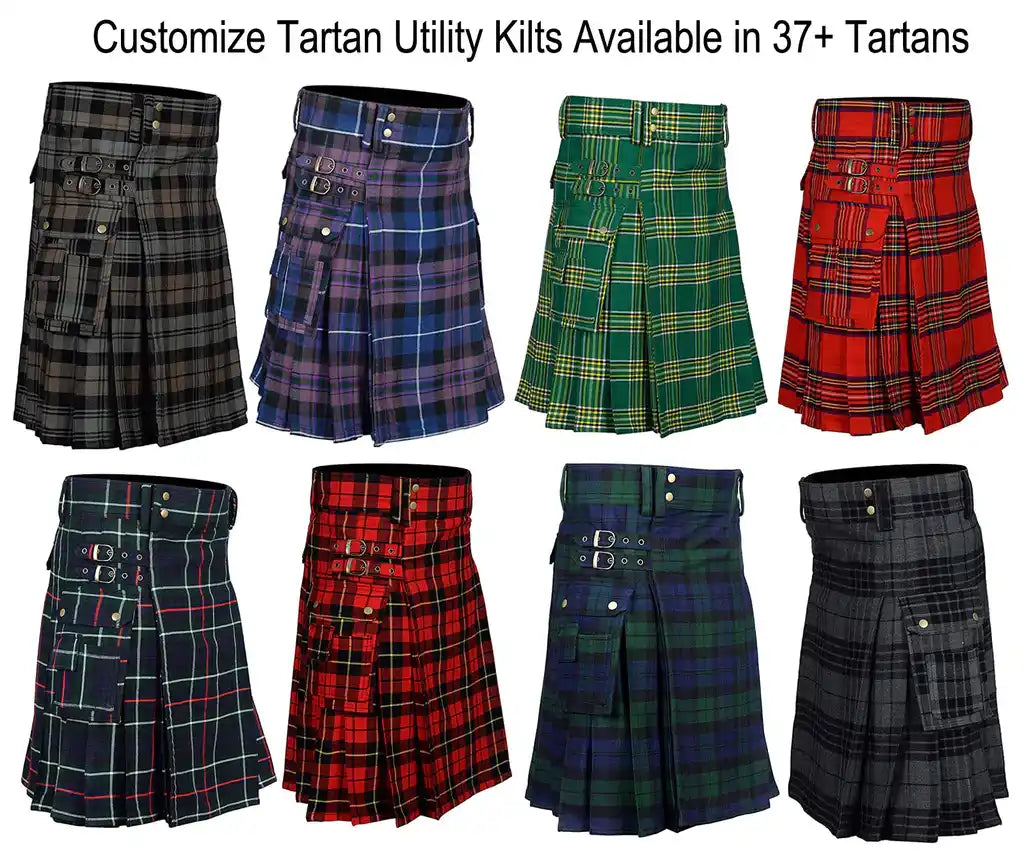Crafting Perfect Great Kilt | Selecting Right Material
Posted by FAGENT ABRONT

The iconic great kilt holds a revered place in Scottish culture, embodying a rich history and a profound sense of identity. Choosing the right material for crafting a great kilt is not just a matter of aesthetics but a tribute to tradition and practicality. This blog post aims to guide enthusiasts and craftsmen alike through the intricate process of selecting the perfect fabric, ensuring that the resulting kilt honors the legacy of Scottish heritage while catering to individual needs and preferences.
The great kilt, or "feileadh mòr," has been a symbol of Scottish pride since the 16th century. Originally designed to protect against the harsh Highlands weather, it has evolved into a ceremonial garment that reflects the wearer's clan affiliations and personal style.
Traditional Materials
- Wool: The backbone of kilt fabric, wool offers unmatched durability and warmth, making it ideal for the damp and cold Scottish climate. Its resilience against wear and tear also symbolizes the enduring Scottish spirit.

- Tartan: More than just a pattern, tartan is a canvas of history, with each color and line representing the lineage and tales of Scottish clans. The variety of tartans available allows for personal expression within the bounds of tradition.

- Other Materials: For those in warmer climates or seeking a different aesthetic, cotton and linen provide lighter alternatives without sacrificing the kilt's distinguished appearance.
Choosing the Right Material
Following Factors to Consider while choosing the right material for kilt:
- Purpose: The occasion for wearing a kilt should influence the material choice. Formal events may call for finer wools, while casual or outdoor activities might benefit from sturdier, more weather-resistant fabrics.
- Climate: The intended wear climate is crucial, with heavier wools suited for cold environments and lighter materials for warmer areas.
- Personal Preference: Comfort, texture, and personal style should guide the final selection, ensuring the kilt is both a statement piece and a garment of comfort.
Exploring Different Types of Wool
- Harris Tweed: Renowned for its quality and craftsmanship, Harris Tweed is the epitome of luxury in kilt-making, offering a rich texture that withstands time.
- Shetland Wool: Known for its softness, Shetland wool provides a lighter, more comfortable option without compromising on warmth.
- Lambswool: For those seeking the pinnacle of softness and insulation, lambswool is unmatched, offering a gentle, enveloping warmth ideal for colder months.
Understanding Tartan Patterns
Tartan patterns are the heart of the kilt's visual appeal and historical significance.
- Clan Tartans: Each clan tartan is a wearable history, with colors and patterns that tell the story of Scottish families and their ancestral lands.

- District Tartans: These patterns celebrate the diverse landscapes of Scotland, from the Highlands to the Lowlands, allowing wearers to pay homage to specific regions.
- Fashion Tartans: Modern design meets tradition in fashion tartans, which introduce contemporary aesthetics while respecting the kilt's heritage.
Other Considerations in Material Selection
- Weight: The weight of the fabric affects both the drape of the kilt and its suitability for different seasons and occasions.
- Maintenance: Each material demands specific care to maintain its beauty and longevity, from gentle washing to professional dry-cleaning.
- Budget: The cost of materials can vary widely, with premium wools and rare tartans commanding higher prices. Balancing quality with affordability is key to selecting the right fabric.
Crafting a great kilt is a journey that intertwines personal taste with the deep-rooted traditions of Scottish culture. By carefully selecting the material, considering its purpose, climate suitability, and personal preference, and understanding the rich tapestry of tartan patterns, one can create a garment that not only pays homage to the past but also serves as a personal emblem of pride and craftsmanship. Whether choosing the rugged elegance of Harris Tweed, the soft embrace of lambswool, or the historical depth of clan tartans, the material of your great kilt is a canvas on which to express your unique story within the broader narrative of Scottish heritage.
